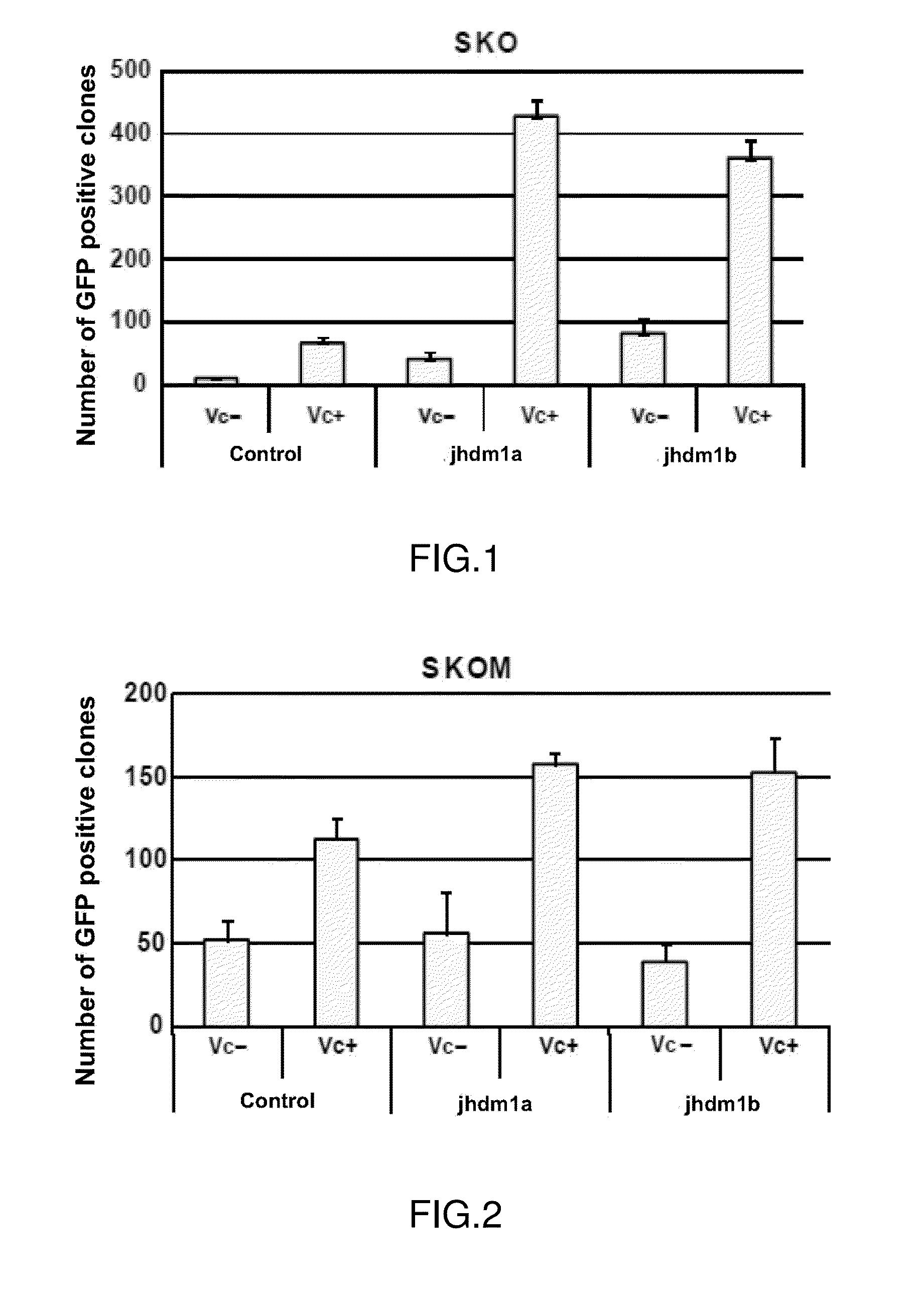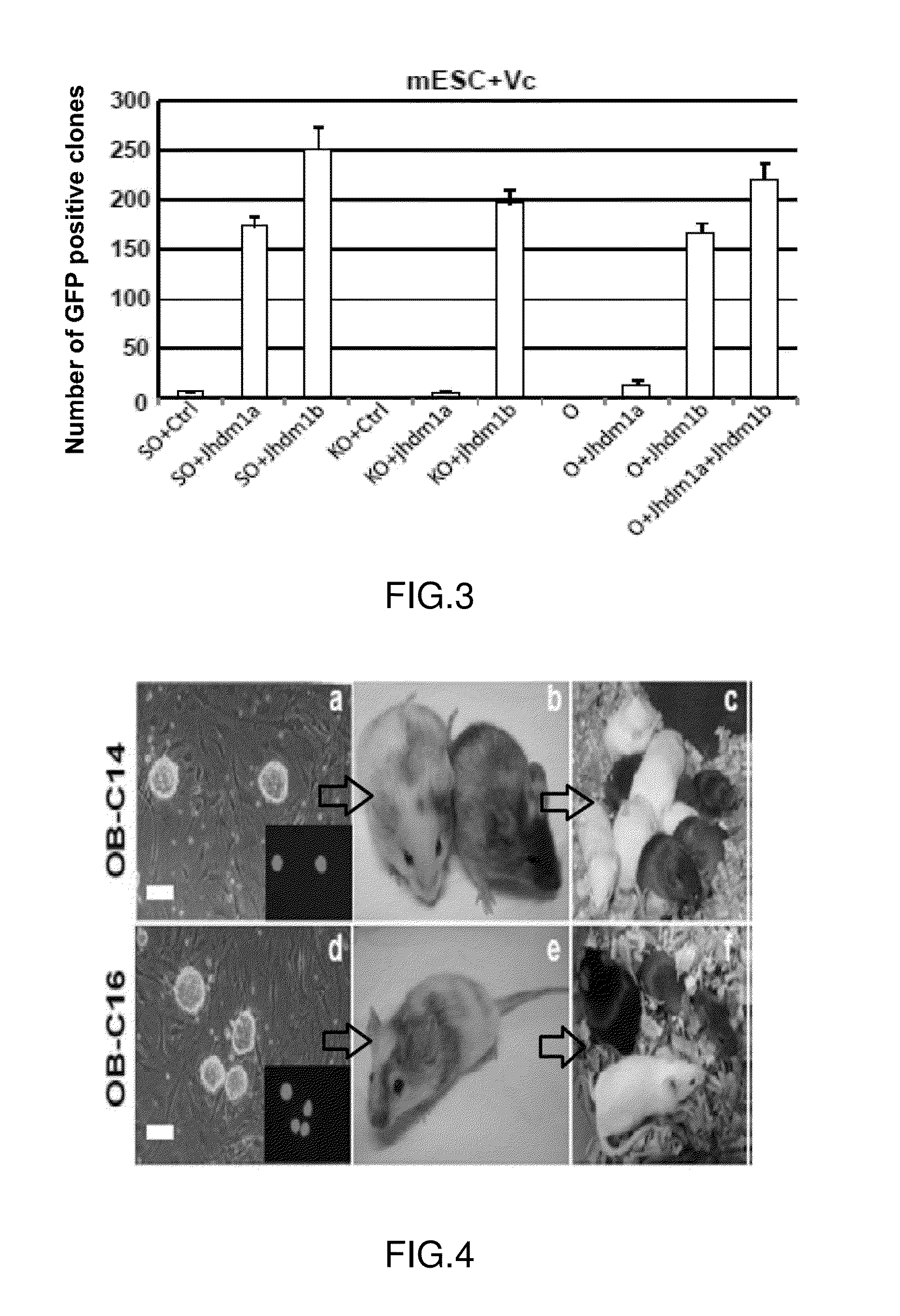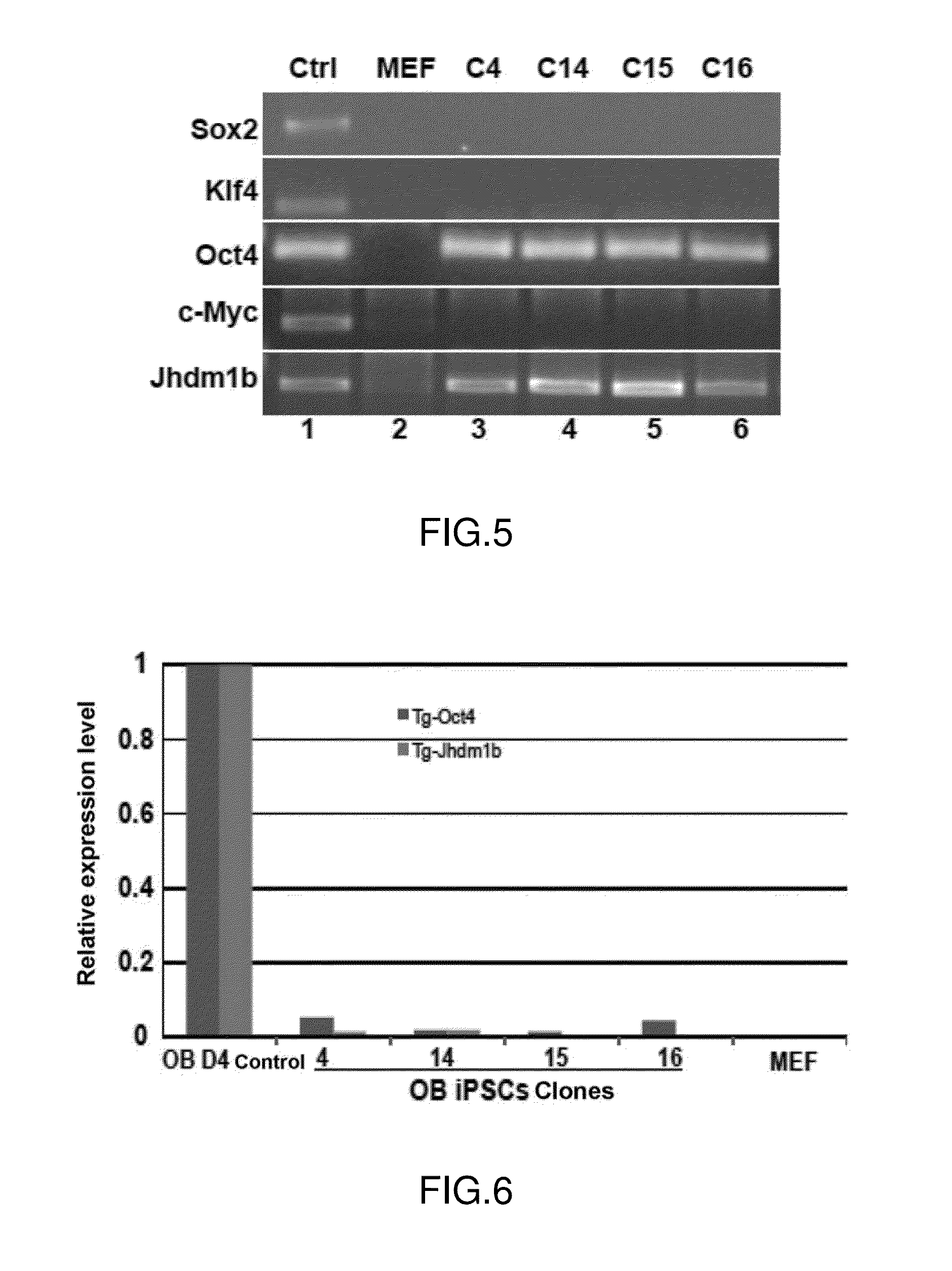Method for increasing the efficiency of inducing pluripotent stem cells
a technology of pluripotent stem cells and efficiency, applied in the field of improving can solve the problems of limited cell sources, many complex problems in cell transplantation therapy, and failed to meet the tremendous demand of clinical medicine, so as to improve the quality of induced pluripotent stem cells, improve the effect and increase the efficiency of inducing pluripotent stem cells
- Summary
- Abstract
- Description
- Claims
- Application Information
AI Technical Summary
Benefits of technology
Problems solved by technology
Method used
Image
Examples
example 1
1. Construction of Vectors Comprising Jhdm1a and Jhdm1b Coding Regions
[0076]a. Design of Primers for Cloning
[0077]The sequence data of cDNAs of Jhdm1a and Jhdm1b were obtained from http: / / www.ncbi.nlm.nih.gov / pubmed, wherein the sequence of the cloning region of the Jhdm1a cDNA is SEQ ID NO: 1, and the sequence of the cloning region of the Jhdm1b cDNA is SEQ ID NO: 2. The coding sequences of Jhdm1a and Jhdm1b were amplified by designing specific primers.
[0078]The base sequence of Jhdm1a upstream primer is shown as SEQ ID NO: 3;
[0079]The base sequence of Jhdm1a downstream primer is shown as SEQ ID NO: 4;
[0080]The base sequence of Jhdm1b upstream primer is shown as SEQ ID NO: 5;
[0081]The base sequence of Jhdm1b downstream primer is shown as SEQ ID NO: 6;
[0082]b. Amplification of Coding Sequences by RT-PCR
[0083]Total mRNAs were extracted from isolated ICR mouse embryonic fibroblasts (MEFs) and human H1 embryonic stem cells according to the following method: a culture medium was removed...
example 2
Identification of the Induced Pluripotent Stem Cells from the Example 1
[0111]As shown in FIG. 3 and FIG. 6 to FIG. 10, a series of identification experiments were carried out on pluripotent stem cell clones induced by Oct4 and Jhdm1b to verify whether they are iPS cells (induced pluripotent stem cells). The identification experiments include: quantitative PCR, immunofluorescence assay of their surface markers, promoter methylation degree analysis, karyotype identification, chimera formation, and so on.
[0112]Quantitative PCR Experiments:
[0113]All the quantitative PCR experiments were conducted in a CFX-96 type quantitative PCR instrument from Biorad using a kit from Takara, and the reaction conditions were 95° C., 2 minutes, 95° C., 10 seconds, 60° C., 30 seconds, reading the fluorescence value, repeating for 40 cycles.
[0114]Analysis of Methylation of the Promoter Region
[0115]The analysis was carried out by sodium bisulphite sequencing. The genomic DNAs in the target cells were extra...
PUM
| Property | Measurement | Unit |
|---|---|---|
| volume | aaaaa | aaaaa |
| temperature | aaaaa | aaaaa |
| temperature | aaaaa | aaaaa |
Abstract
Description
Claims
Application Information
 Login to View More
Login to View More - R&D
- Intellectual Property
- Life Sciences
- Materials
- Tech Scout
- Unparalleled Data Quality
- Higher Quality Content
- 60% Fewer Hallucinations
Browse by: Latest US Patents, China's latest patents, Technical Efficacy Thesaurus, Application Domain, Technology Topic, Popular Technical Reports.
© 2025 PatSnap. All rights reserved.Legal|Privacy policy|Modern Slavery Act Transparency Statement|Sitemap|About US| Contact US: help@patsnap.com



